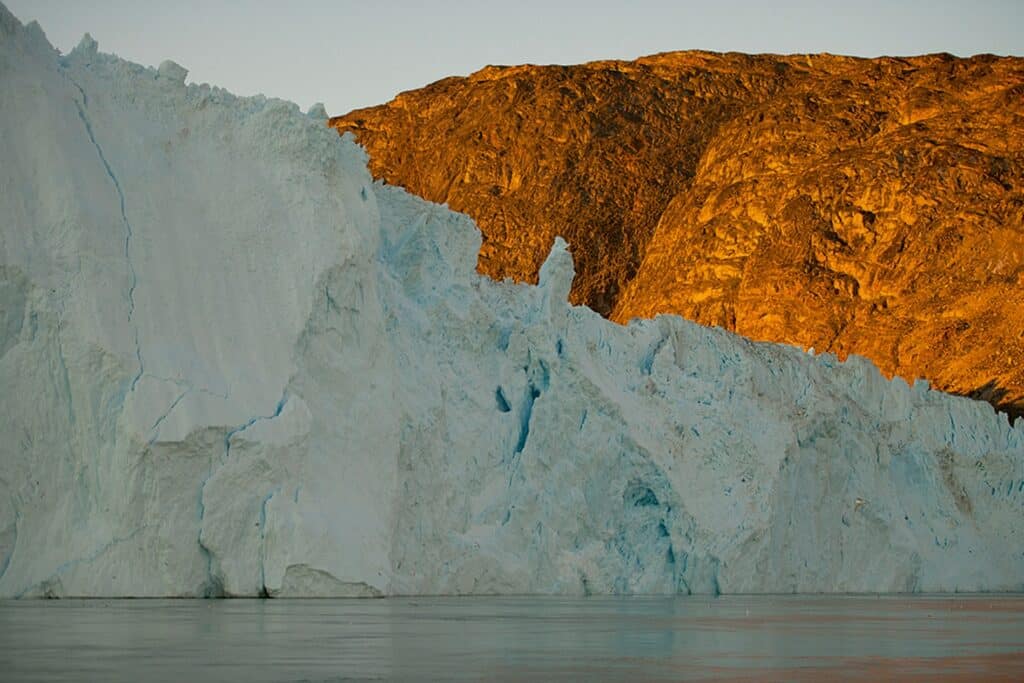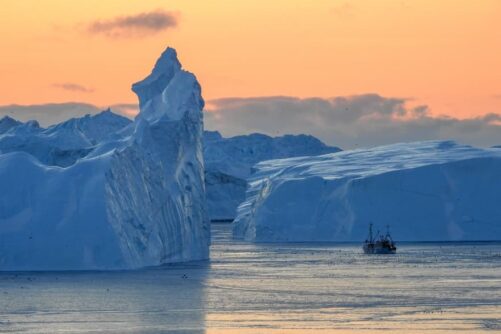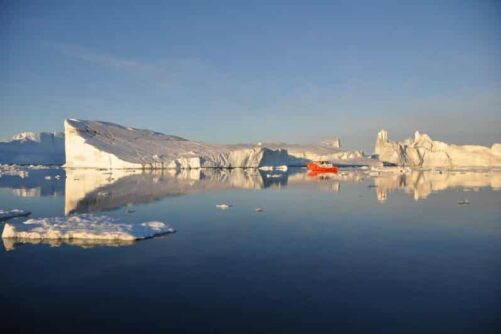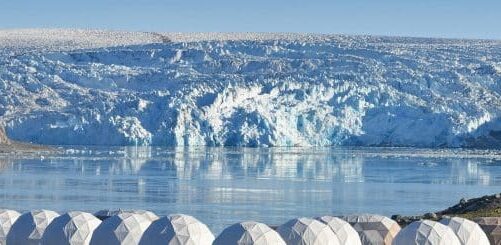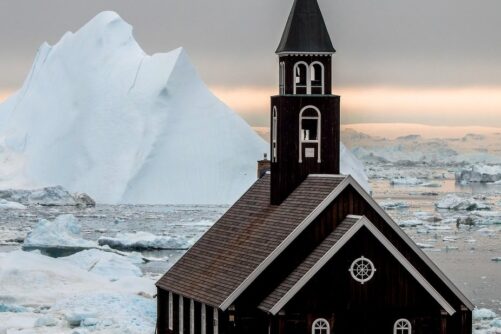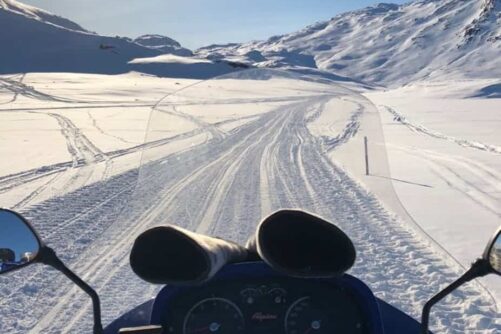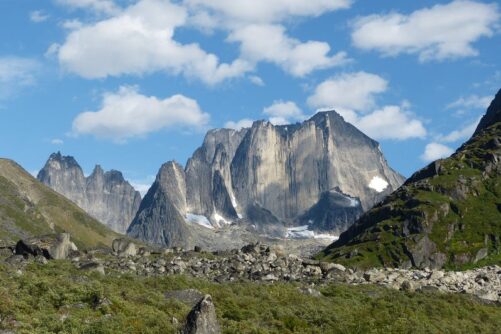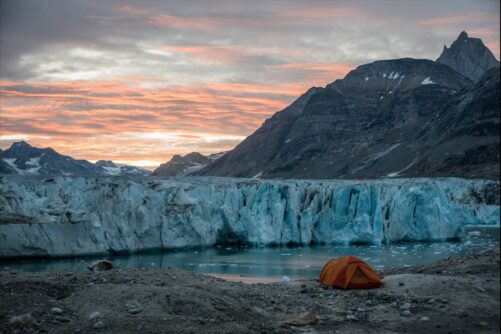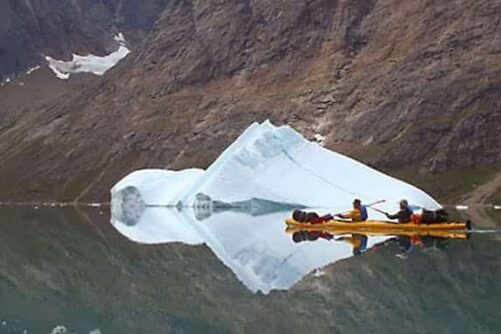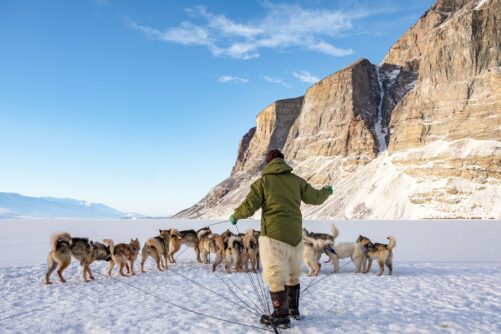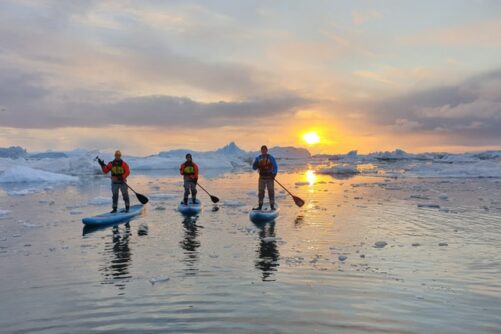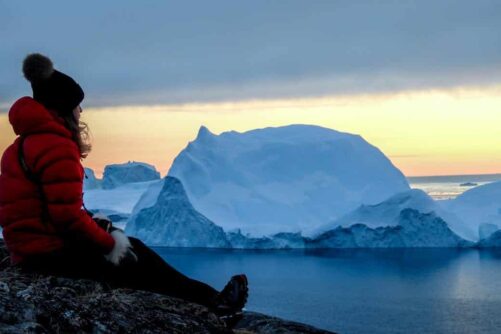
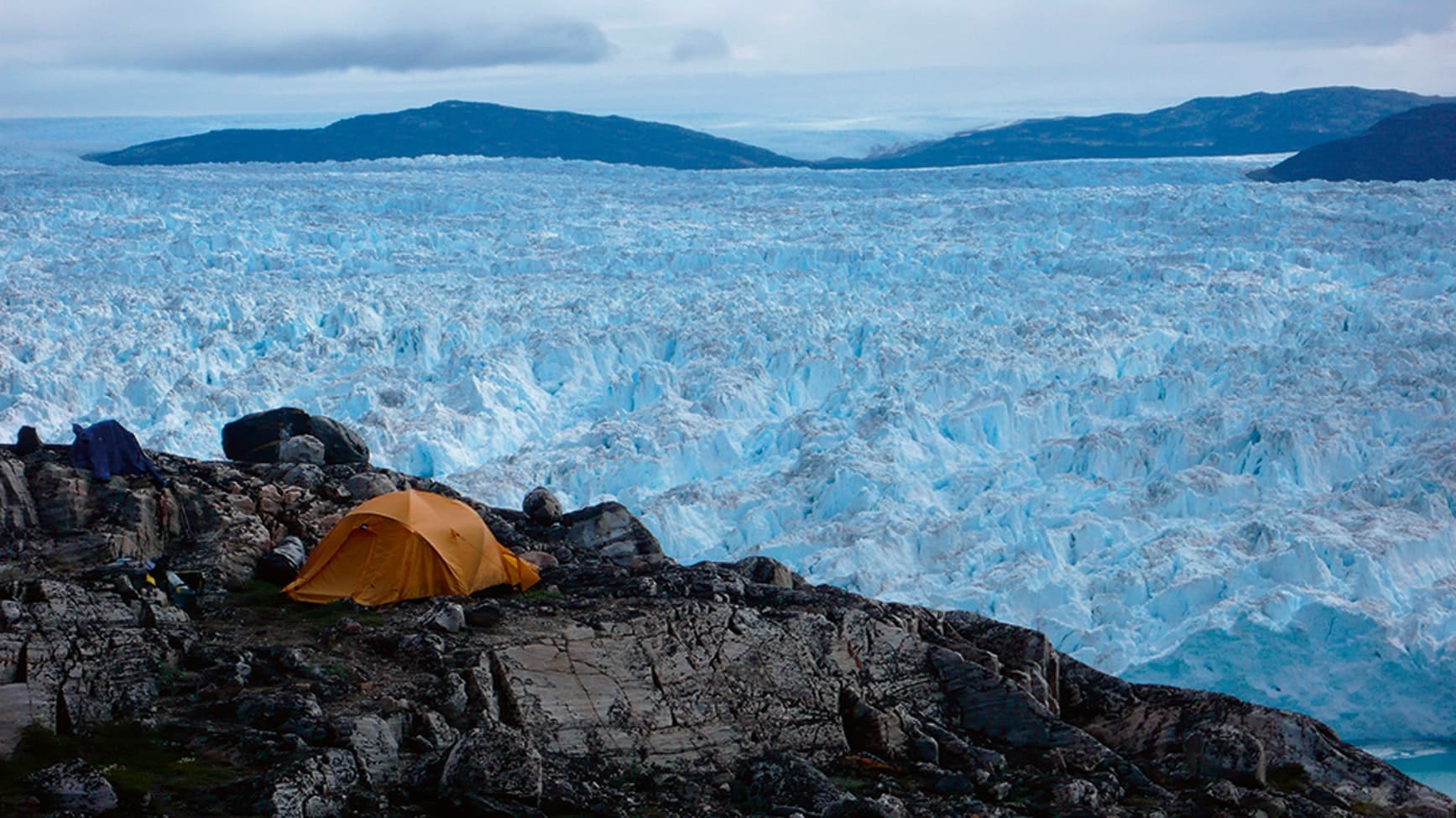
The Sound of the Arctic
Published: 08/06/2020
Reading time: 6 minutes
A glacier pops, crackles, snaps and rumbles, but after several days I realise there is so much more to it than that
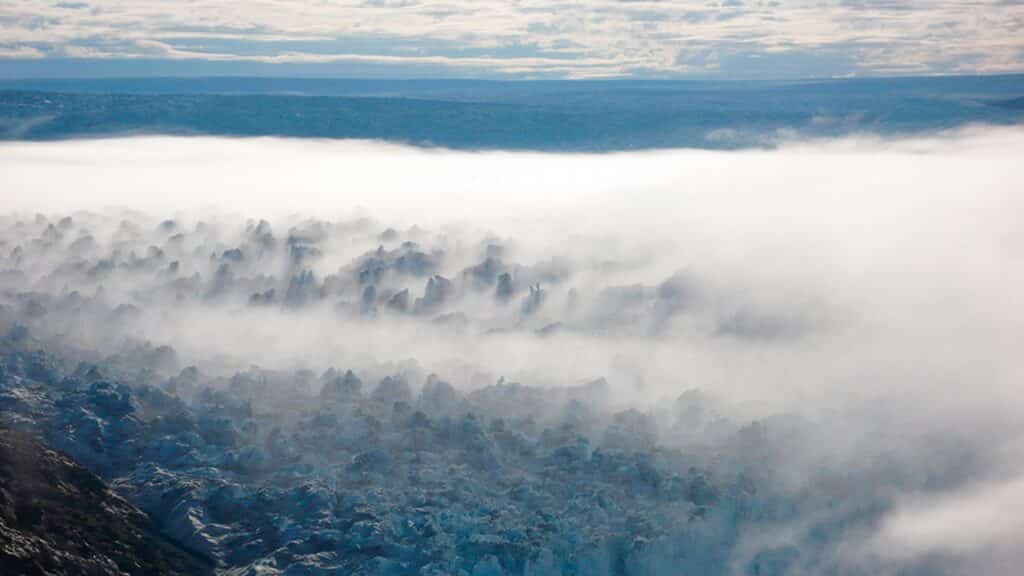
Can you record the sound of silence? This problem puzzles me as I stand and gaze at the view. Far in the distance the dog-toothed mountain of Uummannaq shimmers in the heat haze whilst around me an enormous amphitheatre of towering ice-carved fjords converge into a single, deep sapphire-blue fjord in which a jumbled mass of bergs float lazily. All is still, yet signs of life are everywhere.
Flowers and thyme await pollination by insects; the meandering prints of a lone musk ox are firmly, freshly impressed into the boggy ground in front of me; on an island of rock in this lush mossy green river a tiny, forgotten, snow-white feather from a bunting lies.
Nothing moves. It’s as if the world has paused for breath. I stand transfixed for minutes, waiting for the silence to be broken, but the loudest thing I hear is my heartbeat.
Finally the weight of the recording equipment digging into my shoulder reminds me that there is work to be done and, beaten by nature, I tear my eyes from the view and head back to camp.
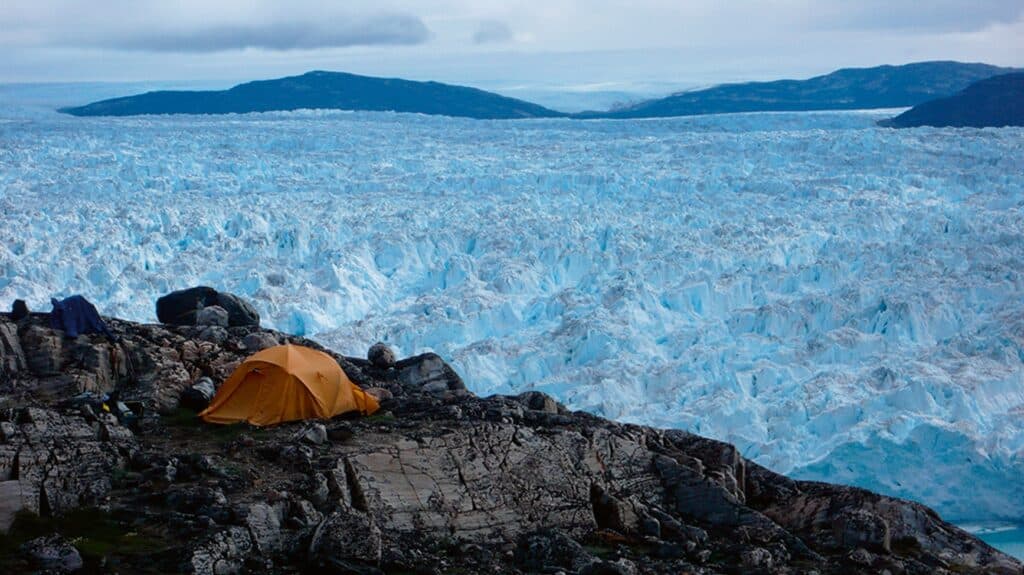
Iceberg Factory
The rocky outcrop where we have chosen to stay is home to 23 BBC colleagues, scientists who have settled here for four weeks of filming.
Multi-coloured tents are dotted across the only flat piece of land for kilometres, all carefully spaced so that each occupant is far enough from the others so as not be disturbed by their snoring.
Although we are already 400 metres above the water the cliffs around us tower over us. At 4.2 billion years old they are some of the oldest known to science, but they are not what has brought us here.
The magnet that has attracted our expedition lies in the waters below. In fact it does more than just lie. It dominates the landscape with a magnificent brooding presence.
It’s one of the largest and most powerfully destructive natural phenomena on the planet – a glacier.
»Store Glacier« is not the widest or the longest glacier in Greenland.
Peterman Glacier in the far north and Sermeq Kujalleq near Illulissat are far bigger, but from our vantage point surely none can look more spectacular.
Ten kilometres across, 600 metres deep and stretching away to the distant ice cap, its surface is like the texture of elephant skin, rent with gaping crevasses and scattered with precarious ice towers which rise and fall over the hidden rock beneath that it is inexorably grinding to rubble.
What makes »Store Glacier« particularly special, the reason we are here, is that it is one of the fastest-moving glaciers in the world. Twenty metres a day may not sound fast, but that equates to about 44 billion cubic metres of ice calving off the face each year. It is an iceberg factory.
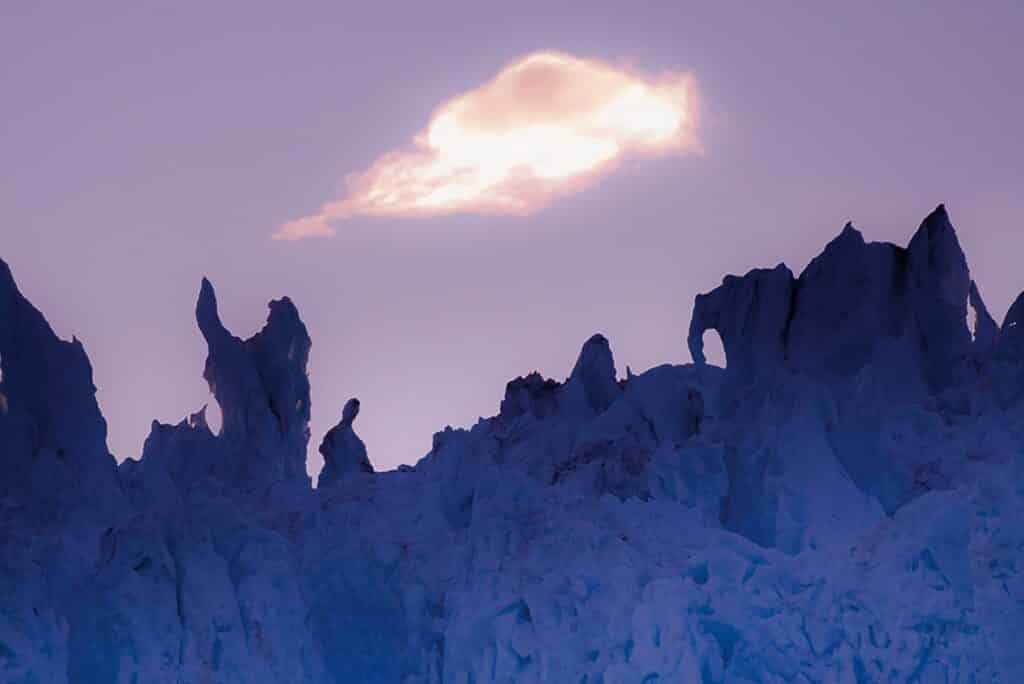
Silent strategy
The first thing one quickly come to realise, is just how dangerous such an active glacier can be. The calving front is a death zone where maelstroms churn in savage fury whilst millions of tonnes of ice, cracking free from the mother lode, smash all before them.
Do not for one moment imagine these blocks are small; they’re not even house-sized. You need to think of streets and at times complete neighbourhoods crashing into the water sending huge tsunami waves, 15 metres high, racing across the fjord tearing and destroying everything in their path.
This makes our job a difficult one. We want to get as close to this drama as we can yet stay far enough away from its fury to be safe. Telephoto lenses and helicopters, essential tools of the highly experienced camera team, help them to get the dramatic shots required – long lenses mean a lot of the work can be done from camp.
Unfortunately I cannot adopt the same techniques. The throb of generators, people talking, the clangour from the kitchen tent and the overwhelming clatter of the helicopter drown everything in a welter of noise.
My strategy has to be one of silence, which means getting up close to the glacier and working whilst everyone else is asleep.
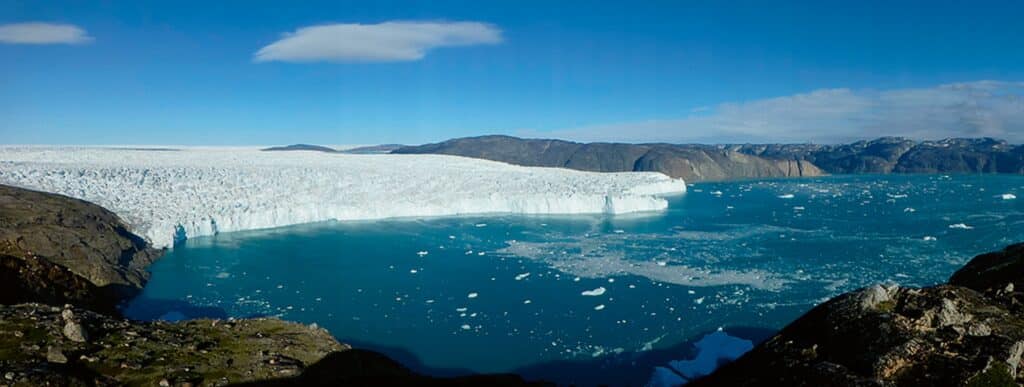
An Ice Concert
What sounds does a glacier make? It pops, cracks, snaps and rumbles. But after living in its presence for several days I learn that there is so much more to it than that.
It clangs and rings as if it holds giant bells within its frozen heart. It fires cannons into deep crevasses, and shouts angry jazz that jars our sleep and snatches our attention to its brooding presence.
I experiment and discover that, by burying a microphone inside the ice where its edge grinds against rock, it produces a slow, deeply rhythmical note like a double bass being slowly bowed. Then there are sharp clashes of cymbals and tympanic thuds as crevasses are formed, splitting and tearing from their surroundings, or drum rumbles as tower blocks of ice disintegrate into the water.
There are other noises too: the tinkling chimes of tiny shards of ice, dislocated remnants of the break-up, hitting each other as they swirl in the water which fizzes with billions of tiny bubbles of air frothing free after centuries of frozen imprisonment.
Animals, too, make their mark. Ringed seals have made their home in these dangerous waters. From our elevated position we look down on their basking forms and can hear nothing. But climbing down the cliff to the water’s edge and placing a hydrophone under the surface reveals a magical sound: they sing with long descending piccolo and flute glissandos which permeate the water with magical sound as they hunt for fish.
We also observe the gulls and swooping fulmars which are drawn to the glacier’s calving face searching for food, their »A-Cappella« voices drifting across to us on the breeze whilst all about us waves of mosquitoes swarm in a black, all-enveloping mist, their noisy static rasping like an un-tuned radio.
There are other sounds in camp too. In the sunlit »night« our sleep is often interrupted by the sharp bark of a female arctic fox who brings her cubs down to tear apart our carefully-stored rubbish bags, their presence also announced by the chirping alarm calls of lapland buntings that nest on the surrounding rocks.
Then there is the whistle and banshee wail of the wind, which on a stormy day rattles through the jagged ice formations.
The metronomic ticking of the rocks around us which expand and cool as they are alternately visited by sun and shadow.
High above our heads the baritone croak of the raven echoes across the landscape.
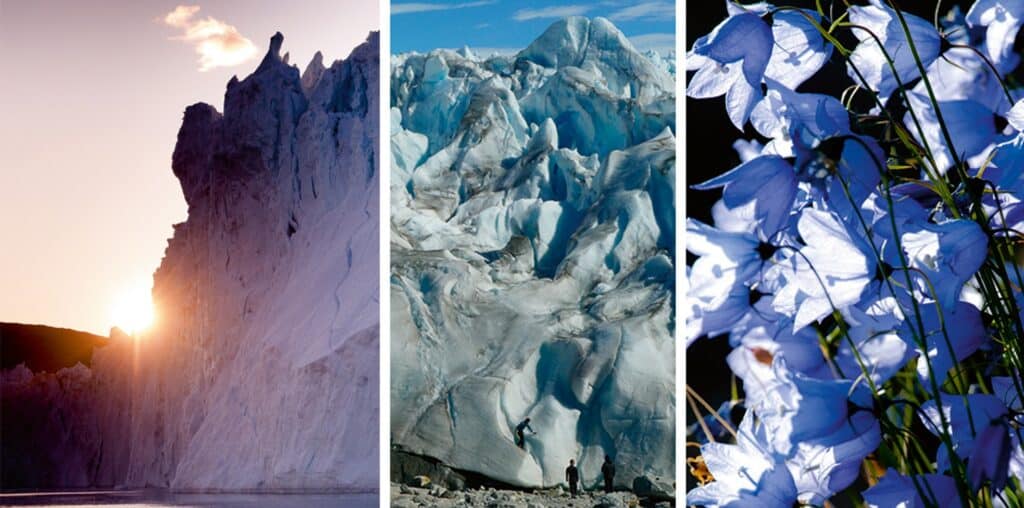
A Life Giver
As I make recordings, my understanding of »Store Glacier« changes and develops. This glacier, this mighty, destructive pulveriser of rock is not simply a destroyer; it’s actually a life-giver. Everything that exists around us is only here because of its continuing presence. Its control is absolute. It shapes the landscape, it controls the climate, and is the life-giving force around which everything else revolves and depends.
From our high, safe vantage point not only are we looking at one of nature’s most powerful and spectacular natural phenomena, we are also witnessing the finest natural symphony orchestra in the world.

Facts
Simon Forrester is a freelance sound recordist. Operation Iceberg has been shown on BBC and Discovery.
